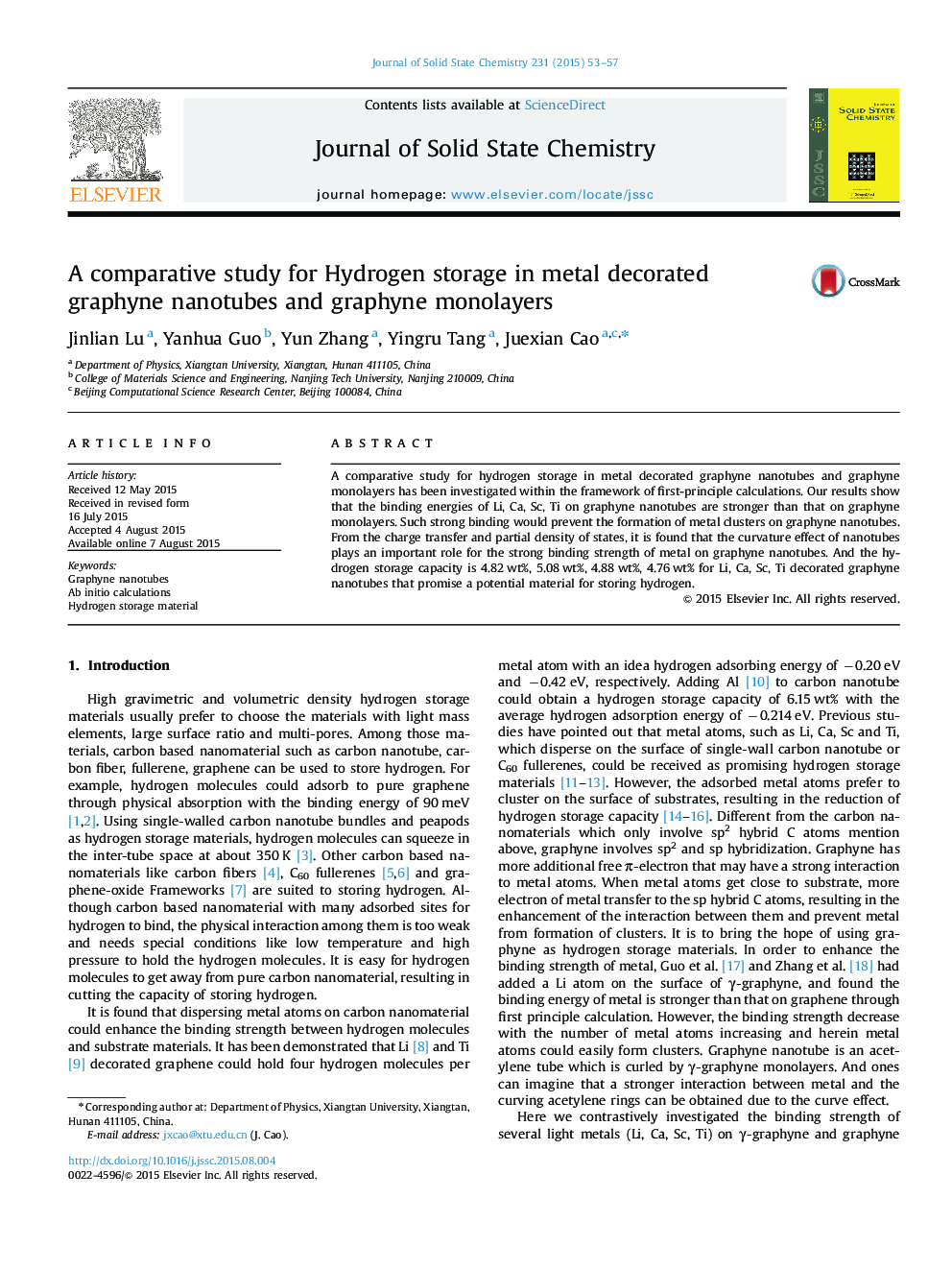| Article ID | Journal | Published Year | Pages | File Type |
|---|---|---|---|---|
| 1329513 | Journal of Solid State Chemistry | 2015 | 5 Pages |
•The binding strength for metal on graphyne nanotubes is much stronger than that on γ-graphyne monolayer.•Metal atoms can strongly bind to the curving triangle acetylenes rings to avoid the formation of metal clusters.•A capacity of Ca@graphyne nanotube is 5.08 wt% which is close to the requirement of DOE in 2015.
A comparative study for hydrogen storage in metal decorated graphyne nanotubes and graphyne monolayers has been investigated within the framework of first-principle calculations. Our results show that the binding energies of Li, Ca, Sc, Ti on graphyne nanotubes are stronger than that on graphyne monolayers. Such strong binding would prevent the formation of metal clusters on graphyne nanotubes. From the charge transfer and partial density of states, it is found that the curvature effect of nanotubes plays an important role for the strong binding strength of metal on graphyne nanotubes. And the hydrogen storage capacity is 4.82 wt%, 5.08 wt%, 4.88 wt%, 4.76 wt% for Li, Ca, Sc, Ti decorated graphyne nanotubes that promise a potential material for storing hydrogen.
Graphical abstractMetal atoms (Li, Ca, Sc and Ti) can strongly bind to graphyne nanotubes to avoid the formation of metal clusters, and a capacity of Ca@graphyne nanotube is 5.08 wt% which is close to the requirement of DOE in 2015.Twenty-four hydrogen molecules absorb to Ti-decorated graphyne nanotube.
